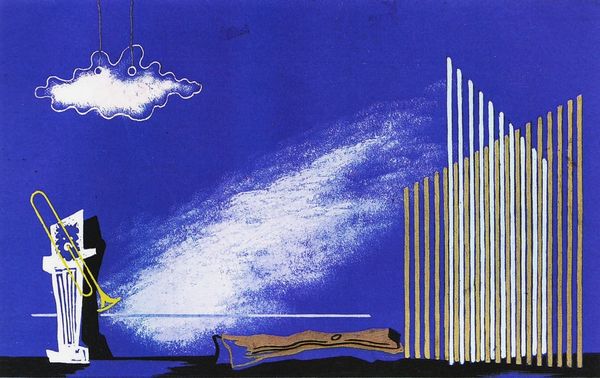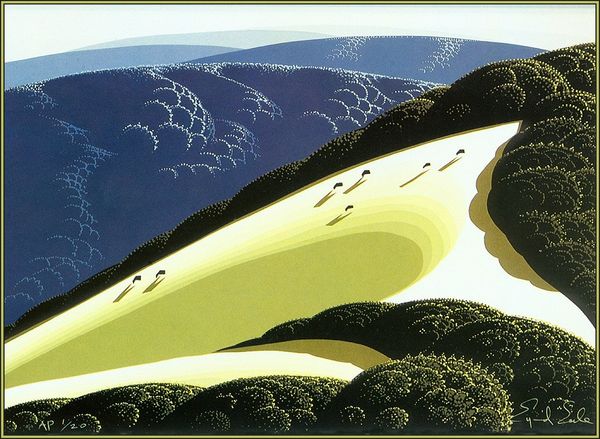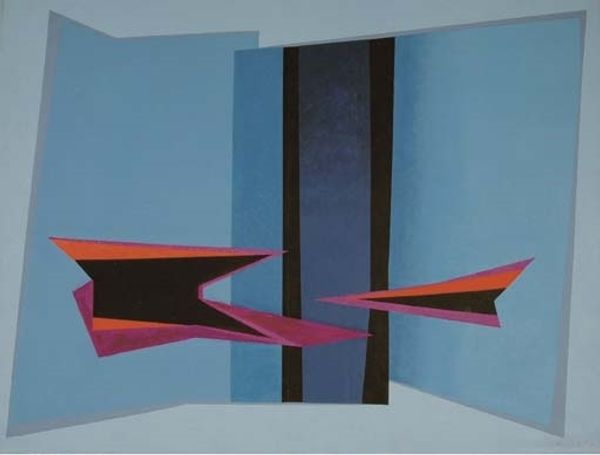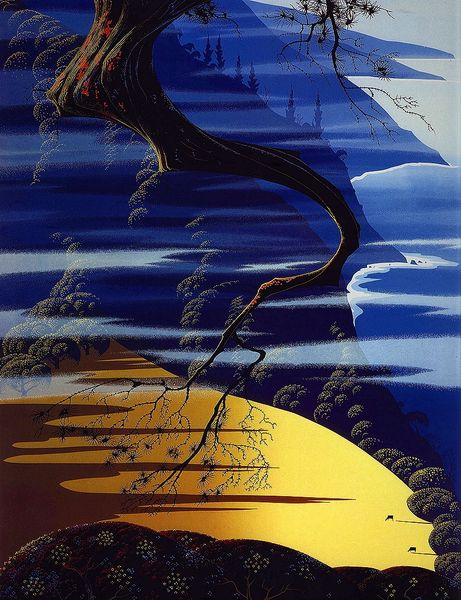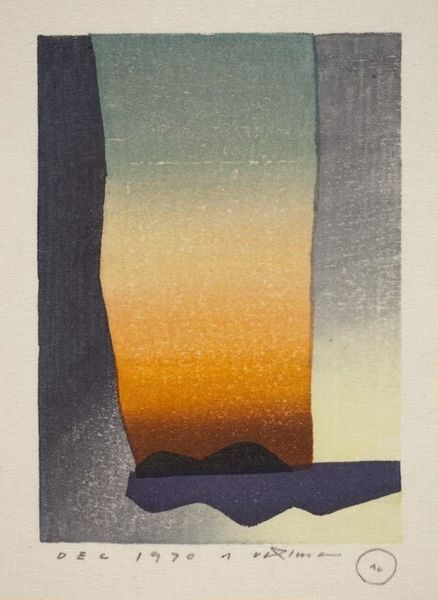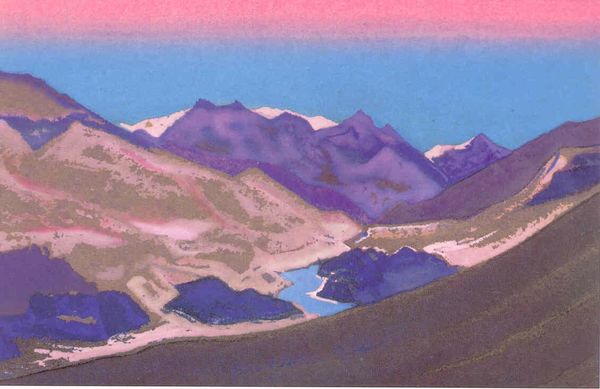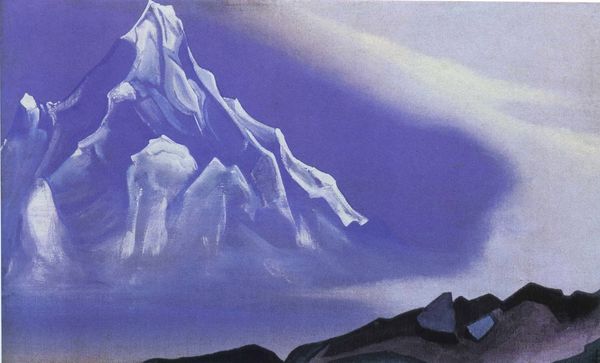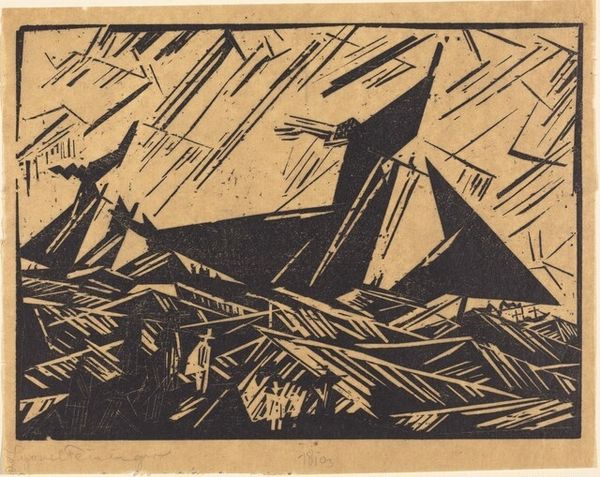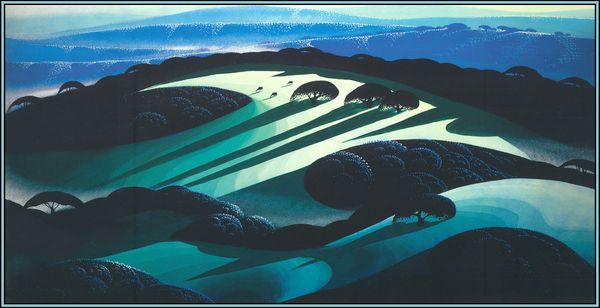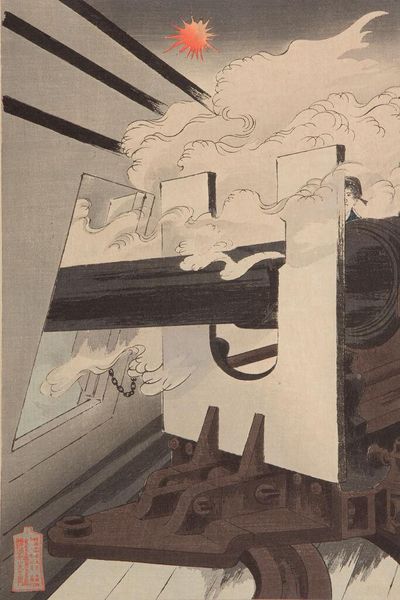
acrylic-paint
#
sky
#
cliff
#
surrealistic
#
landscape
#
art
#
acrylic-paint
#
rock
#
artistic
#
geometric
#
surrealism
#
surrealist
#
surrealism
#
modernism
Copyright: Eyvind Earle,Fair Use
Editor: We are looking at Eyvind Earle's "Desert Rocks," painted in 1991 using acrylic. The colors are so striking, and the composition feels very… geometric, almost otherworldly. How would you interpret this work? Curator: Well, viewing it through a historical lens, Earle's landscapes represent a fascinating evolution. Think about the historical context in which these paintings were produced and consumed. Earle initially gained recognition through his background paintings for Disney films like *Sleeping Beauty*. Those films established his visual vocabulary with landscapes. The mid-century saw increasing environmental awareness coupled with a romanticized vision of the American West. Editor: So, this painting is a commentary on our relationship with nature? Curator: Possibly. Consider how his simplified forms and vivid colors can also be seen as a counterpoint to the increasingly industrialized landscape. The flattened perspective and the dramatic use of light can be viewed as a push against urban sprawl and the destruction of natural resources in service of commercial gain. Does the calculated artificiality invite any thoughts about truth and authenticity in the late 20th century? Editor: I hadn't thought of it that way, but that makes a lot of sense! So, rather than just a pretty picture, it’s a visual statement about society. Curator: Precisely. How artistic choices might carry social or political messages often hide beneath the surface of landscapes. By understanding those intentions, the museum fulfills its goal to make art and its ideas more relevant for a broader public. Editor: This painting gives me a lot more to think about now. Thanks so much for sharing your insights.
Comments
No comments
Be the first to comment and join the conversation on the ultimate creative platform.



